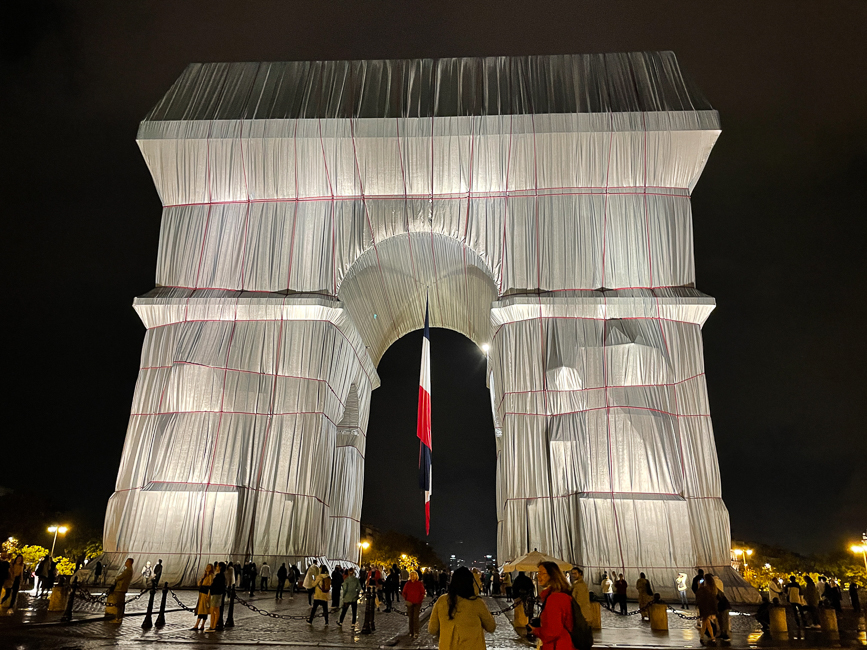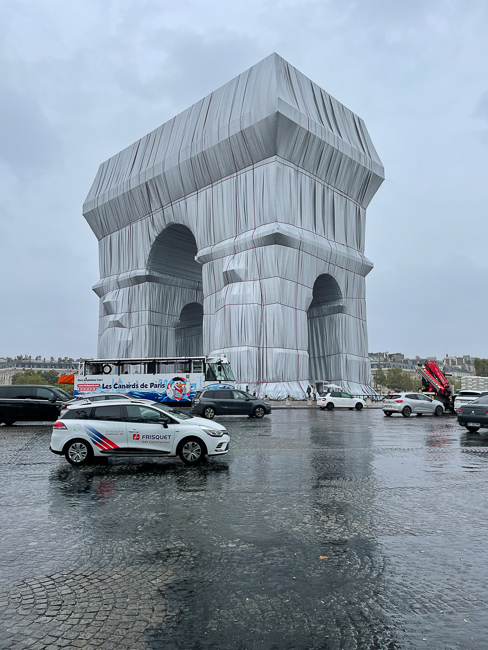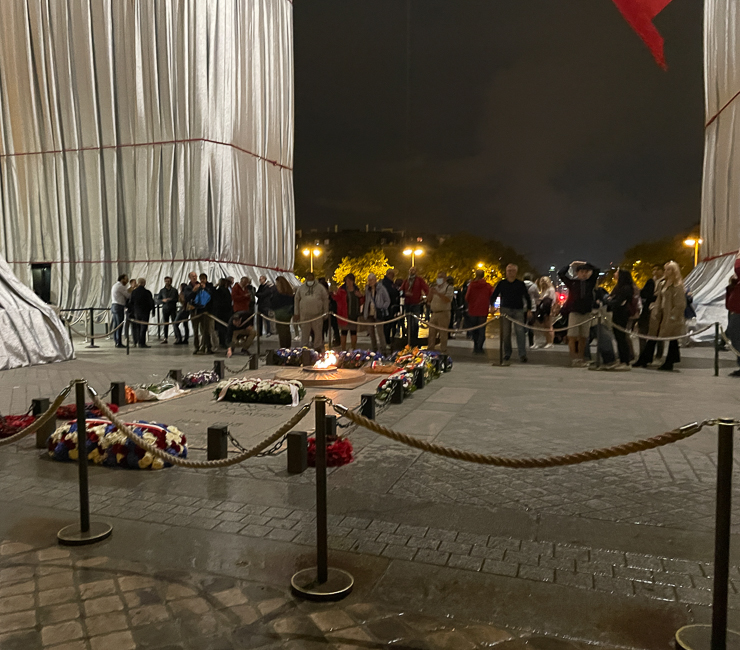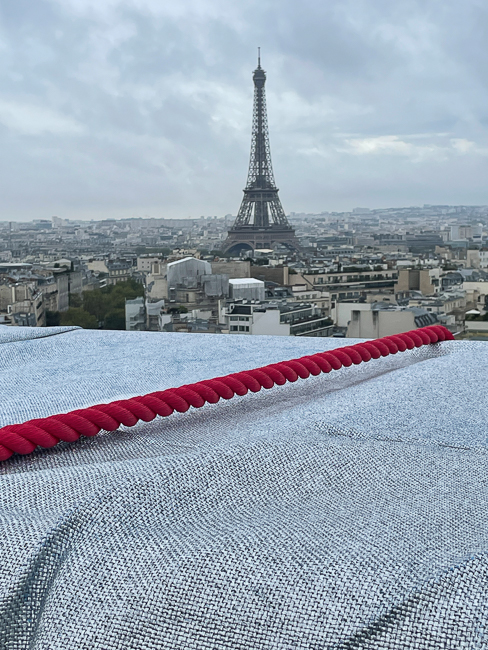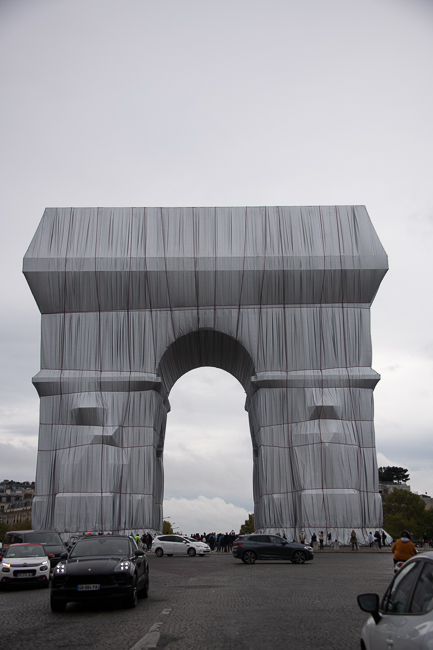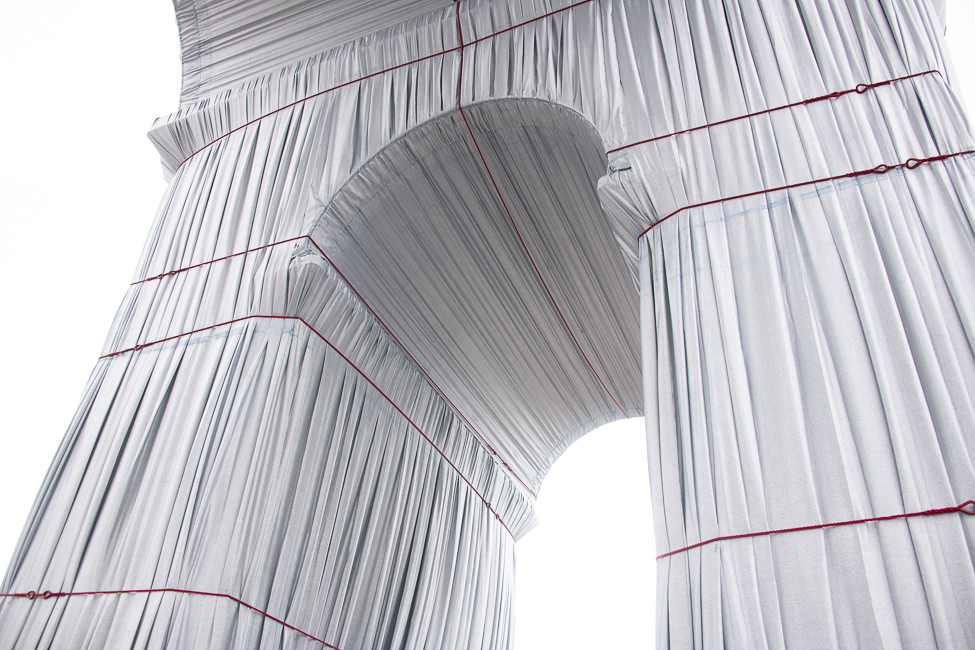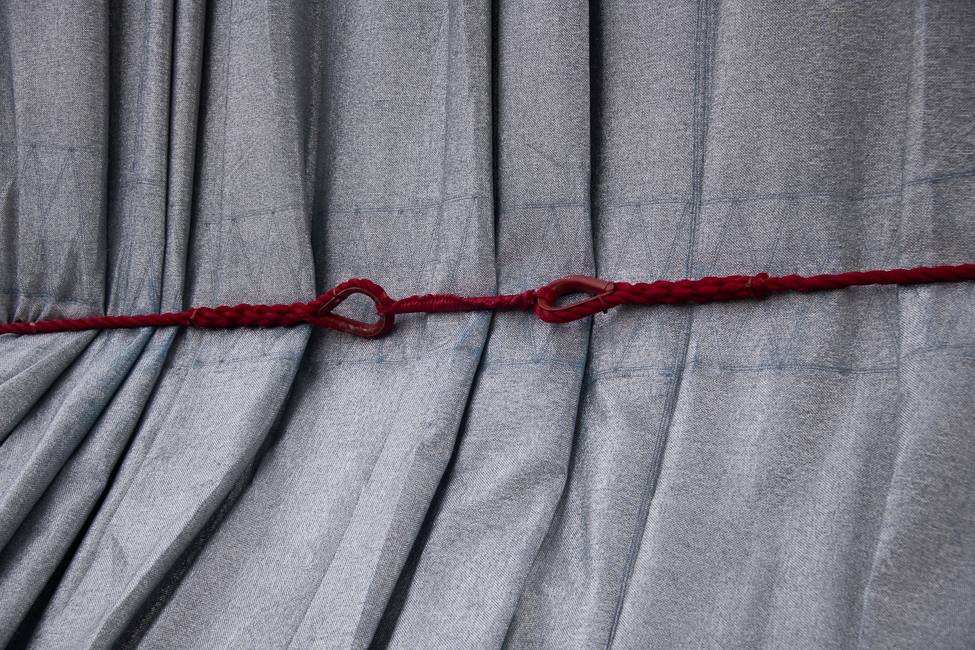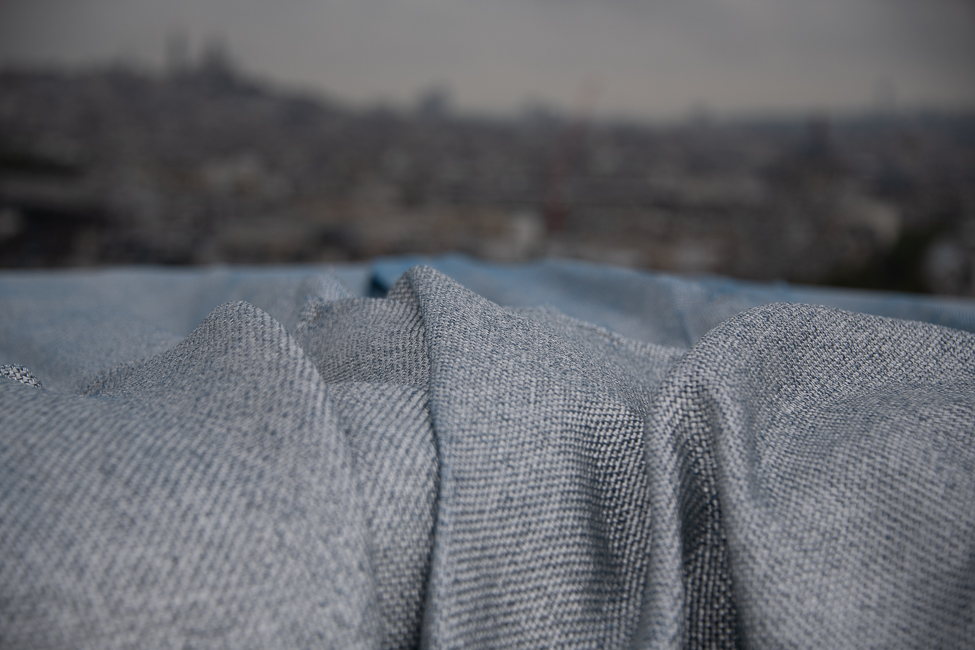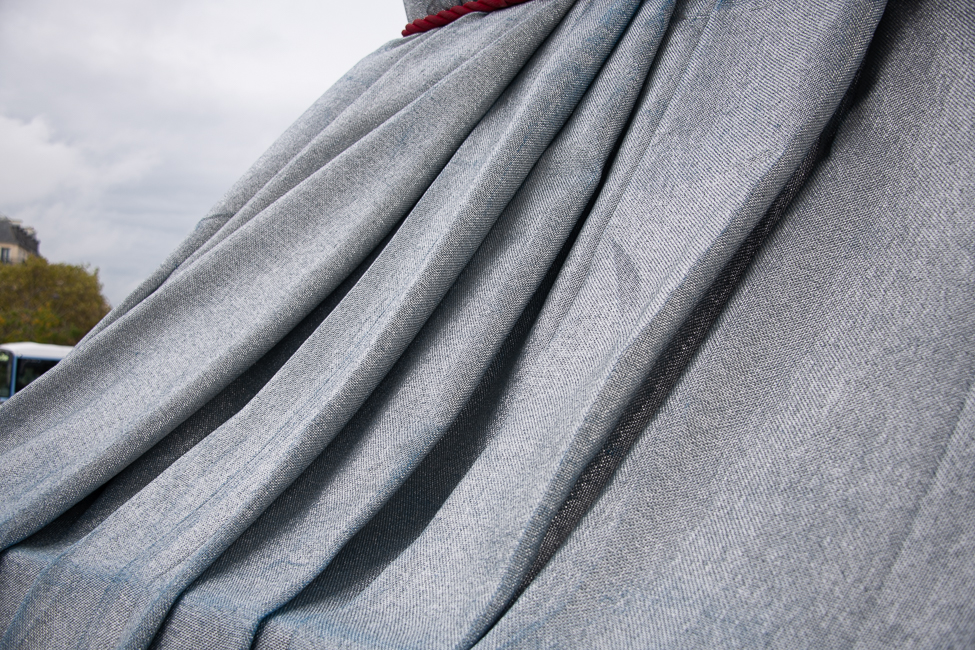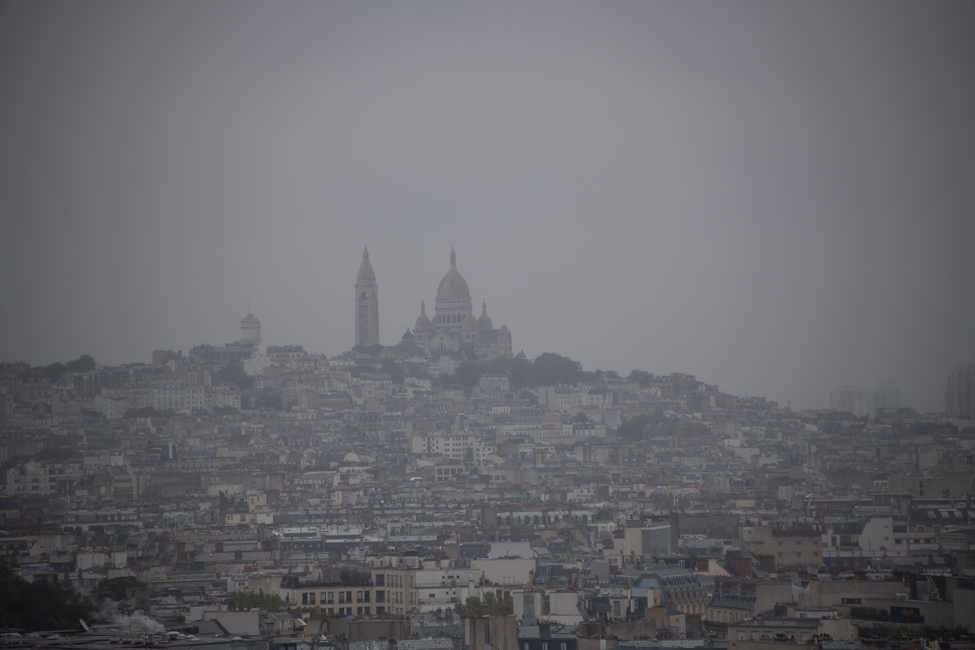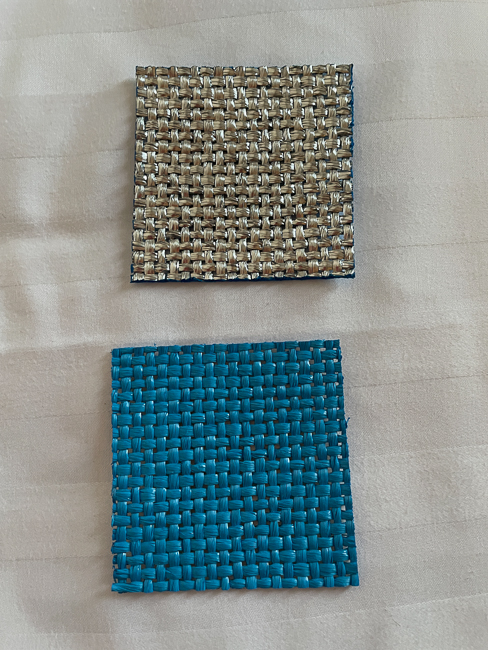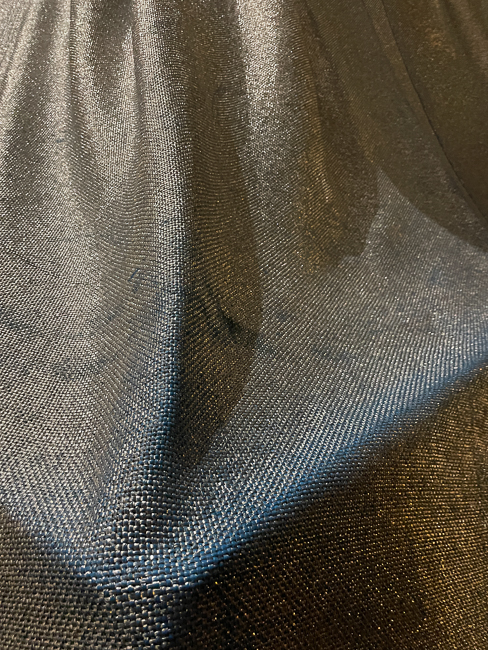September 2021
Christo and partner Jeanne-Claude Denat de Guillebon’s latest project, L’Arc de Triomphe, Wrapped, came to fruition a year after Christo’s death, 12 years after Jeanne-Claude’s death, and 60 years after it was first imagined.
Christo and Jeanne-Claude’s nephew Vladimir Yavachev, who had worked with the couple on various art projects, made L’Arc de Triomphe, Wrapped a reality, and fully financed the project – worth 14 million euros – through the sale of various pieces of art by Christo and Jeanne-Claude.
What I found most impressive was seeing the L’Arc de Triomphe as a single structure, and appreciating its geometry and massive scale. I love L’Arc, with its sculptures and symbolism, but strip those away and you truly appreciate the mass of the monument as a whole, its perfect placement within the City of Lights, and the fact that it is so often ignored in the rush of life.
In Paris, Christo became part of the Nouveau Réalisme art collective, but his journey did not begin in Paris.
Born in Gabrovo, Bulgaria, in 1935, Christo moved to Sofia in 1953 where he began studying at the National Academy of Arts. There, he was taught to paint realistic works and communist propaganda, which he found to be tedious and uninspiring.
Being asked to complete his military service was more than Christo could bear, and with the help of connections he made at the academy, he travelled to Prague and in 1956, he fled the Eastern Bloc.
Christo went to Austria, to study at the Vienna Academy of Arts, and gave up his Bulgarian passport seeking political asylum. In 1958 he was granted a visa to settle in France, and in the same year he first began completing his signature works which involve the wrapping of various objects, which progressively grew in size and complexity.
While I thought this was the last of the Christo projects, I later learned that Vladimir Yavachev plans on completing is a 150-meter-tall pyramid-shaped mastaba in Abu Dhabi, using blueprints created by the couple. I understand the desire to continue the legacy, and expose new people to the works, but in fact it is most likely simply a way to make money off of a deceased artist, a long held tradition of family members of great and successful artists. One of the highlights of these installations was catching glimpses of Jeanne-Claude and Christo, she with her massive mane of red hair and he with his mop of white, walking along the streets engaging with whomever they saw and happily discussing life, the project and art in general.
In 1920, two years after World War I, the tomb of the unknown soldier was placed under the arch. The inscription on it reads: “A French soldier dead for the homeland 1914-1918.” And with that is an eternal flame. The presence of the tomb made it impossible for military parades to pass under the arch, showing the futility of war.
During the project the tomb was carefully respected. And the team that tends the tomb sang praises of the installation crew for that respect.
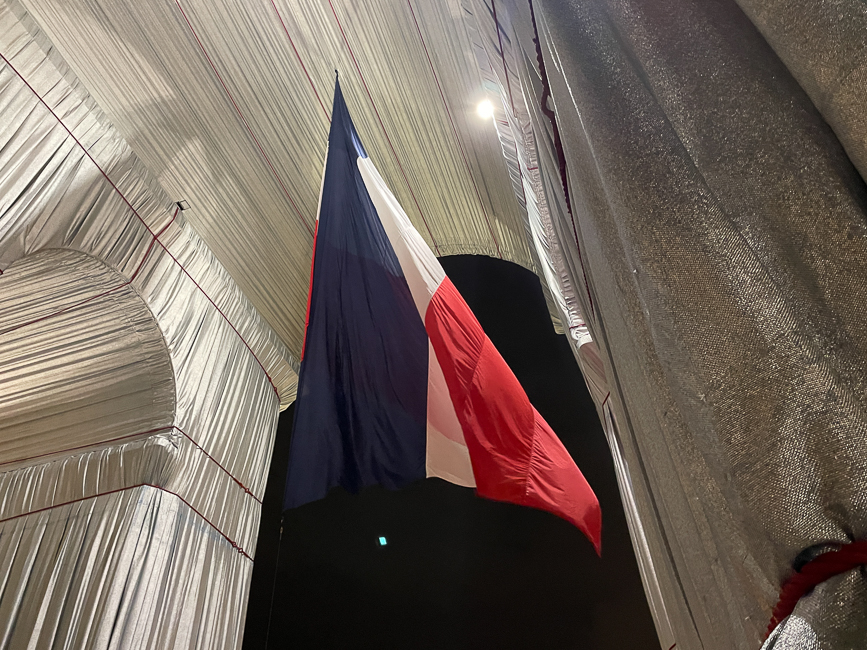
The Flag was only flown for 2 days during the installation for ceremonies. I was fortunate enough to be there for those 2 occasions.
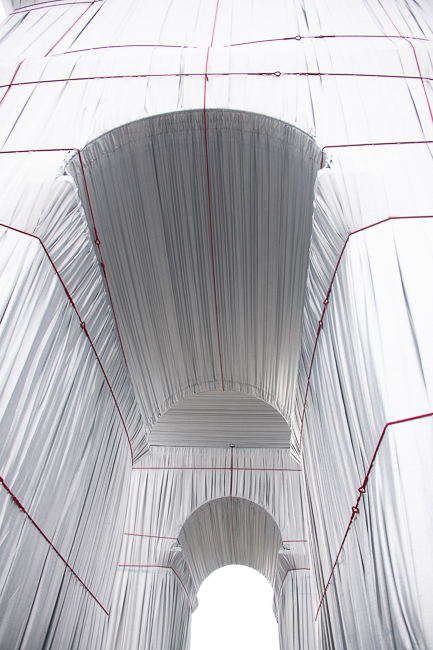
On Monday the 27th the clouds rolled in and the rain began, making L’arc a gray object against a gray sky
*
*
At every Christo installation there were guides ready to answer questions and hand out small squares of the fabric. It was always worth seeking them out, to walk away with a souvenir that actually had meaning.
As you can see, the blue pops through every once in a while when you stand and look at the piece, especially at the folds that stand against hard surfaces.
Regarding the fabric, it is recycled, but the story doesn’t exactly end there.
In a blog post from June 2020, Christophe Catsaros, freelance art and architecture critic, summed up the problem inherent in the duo’s work: “Master packager Christo is nothing more than a symptom of this disposable world where, as long as you recycle, everything is fine.”
“In truth, so-called recyclable packaging in France is not recycled: lack of channels, infrastructure … A large part of the fabrics are exported to South East Asia, where they end up in landfills.To find out more, you can read the book by Flore Berlingen, director of Zero Waste France: Recycling, the big smoke. The work of Christo has at least the merit of underlining the contradictions of our time which wants to be in transition while keeping the glance fixed on values of the last century.”
As someone who has written about the effects of our actions on Climate Change, I understand the difficulties in every action and reaction. There are not easy answers, if in fact, there are answers at all.
It would be so easy to say, sometimes, you just have to turn a blind eye, but we can no longer afford to do so. Another reason why I think this should be the last of Christo’s installations.
The L’Arc de Triomphe, Wrapped was truly magnificent, awe inspiring and worth the trip to Paris to see. It is also hard to put into words how I felt while seeing the project. I saw it over three days, and it changes from moment to moment, as does your reaction. It was so large and so overwhelming, that you couldn’t take small bites, and yet, what you were handed visually was hard to consume, you wanted small bites, but they didn’t exist. The feast was huge, you just had to agree, you were going to gorge yourself, and hope your absorption rate didn’t overwhelm you.
This is a short lived installation, being there for the world to see from September 18th to October 3rd, 2021
